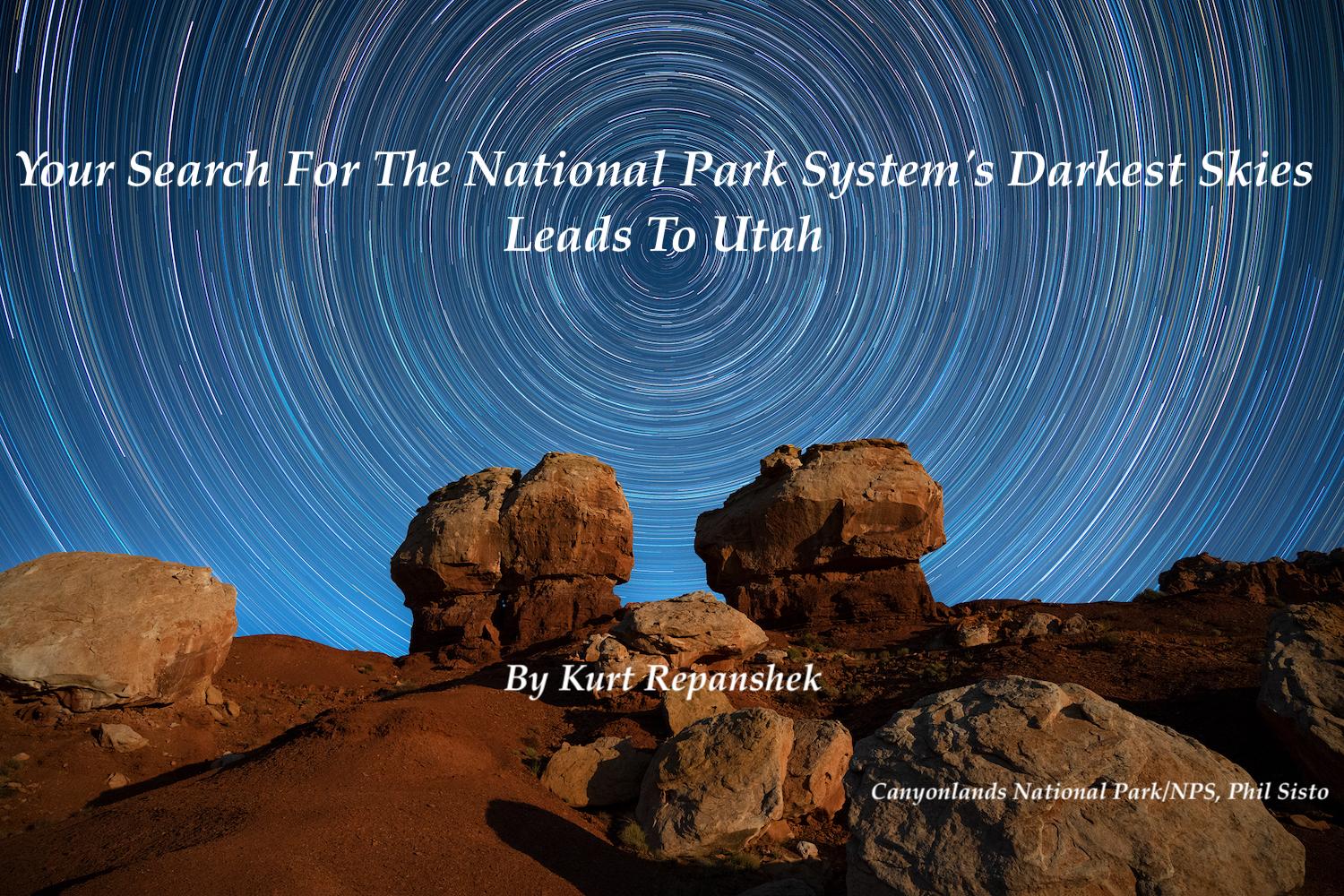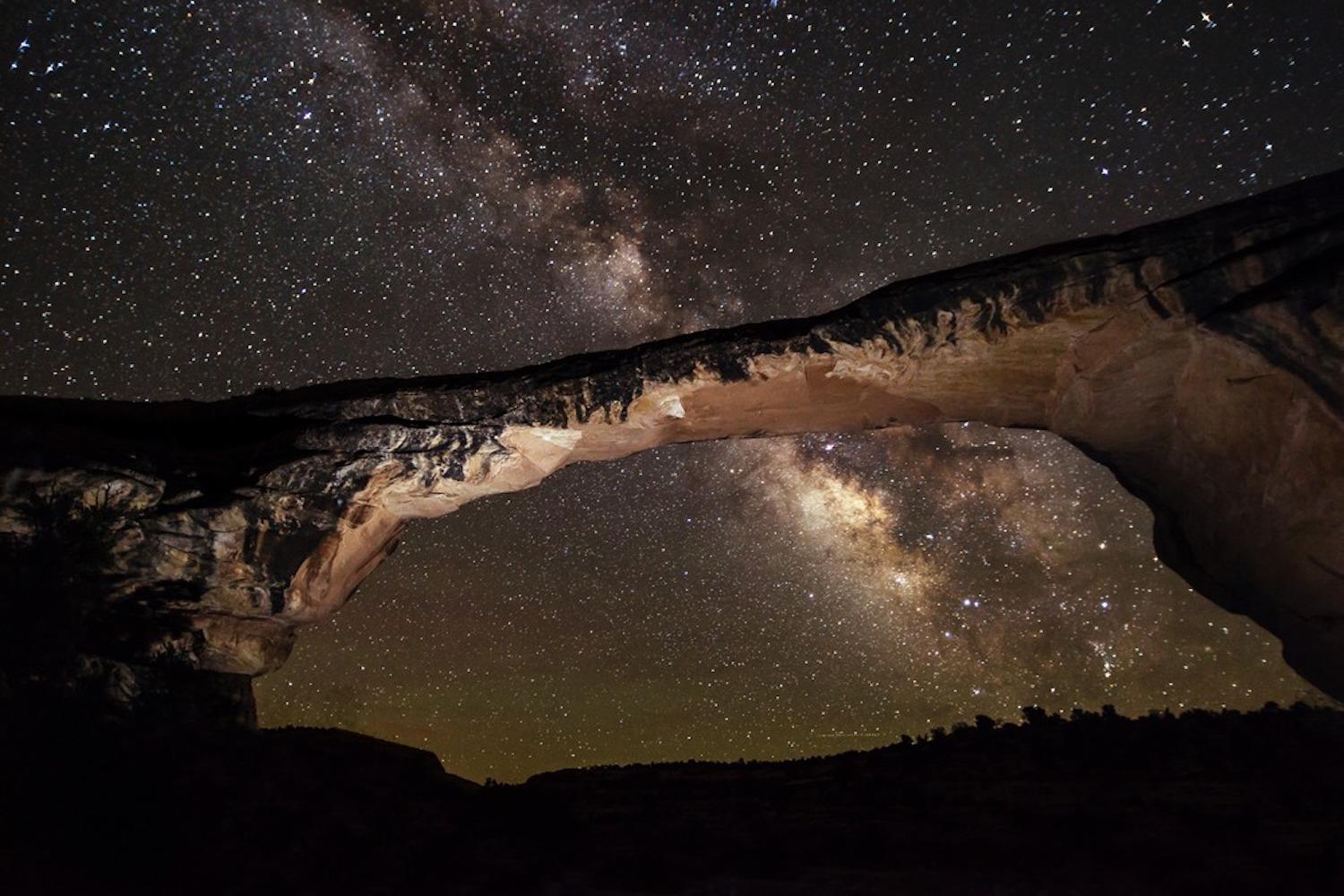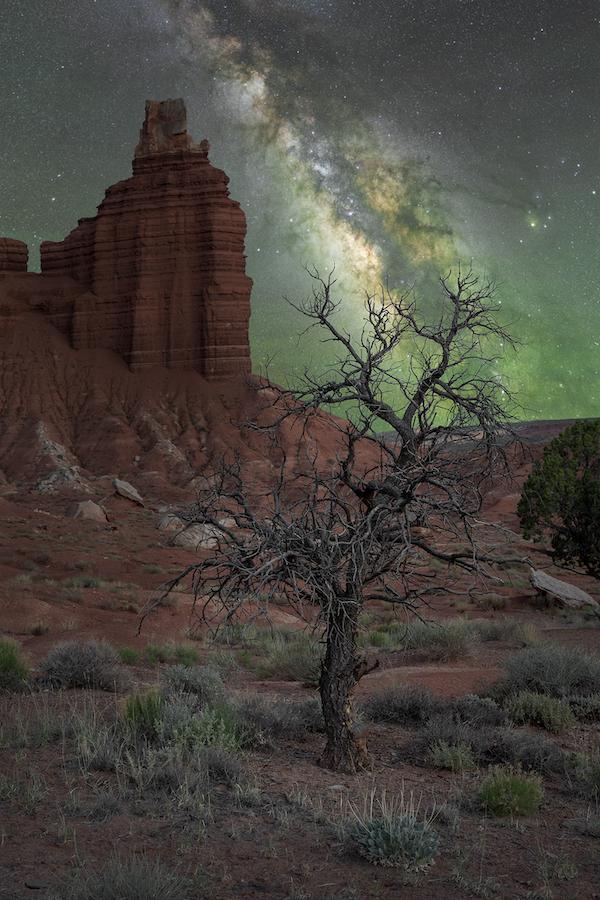
While two river guides, armed with a UV flashlight, searched the beach for scorpions, I wandered in the other direction down the shoreline of the Colorado River to stare into the night sky at the Milky Way and its surrounding twinkling diamonds of light.
Here, many miles downstream from Moab, Utah, and deep in the ruddy gullet of Canyonlands National Park, clouds and canyon walls, not light pollution, were the only threats to obscure one of the darkest skies I have ever witnessed. It was a stark contrast to the cerolean skies we floated under during the day, and much more interesting. The Big and Little Dippers were easy to spot in spite of my general weakness in identifying celestial objects. And Venus was pretty easy to find, as well, along with the occasional satellite drifting across the sky.
While light pollution denies most Americans from walking out the backdoor at night to gaze up in search of constellations, you could say National Park System units in Utah have a monopoly on immaculate night skies.
"When I was an astronomer at Lowell Observatory in Flagstaff, Arizona, I spent many weekends and vacation days driving the backroads of southern Utah. The widely separated small towns, lack of freeways, and gigantic geologic features that block the light from distant cities (even if there were any) made many of the nights in this area the most star-filled I've ever seen," Dr. Tyler Nordgren told me in an email. "Add to this the many clear, warm, mosquito-free evenings during the summer and early fall, and it is the ideal place to just lay out under the stars and let the Milky Way fill your field of view. No other place in the U.S. has all three of those features coupled with the natural darkness and number of parks."

The arching rock formation known as Owachomo Bridge frames this view of the Milky Way overhead at Natural Bridges National Monument/NPS, Jacob W. Frank
National parks in Utah were the very first to capitalize, formally at least, on their dark night skies. Natural Bridges National Monument in Utah was designated in 2007 as the very first International Dark Sky Park by the International Dark Sky Association due to its outstanding efforts to protect its night skies by installing night-sky-friendly lighting and establishing policies to protect darkness and interpret the night skies.
Canyonlands and Capitol Reef national parks joined the club in 2015, Cedar Breaks National Monument in 2017, Bryce Canyon and Arches national parks and Dinosaur National Monument in 2019, and Zion National Park just last year. It's been said that no other state harbors so many parks for Dark Sky-accredited stargazing.
"What is easily verifiable is that Utah has highest density of designated dark sky parks in the world (most not National Park Service but state parks)," said Kevin Poe, the original Dark Ranger for the National Park Service.
Is one of those locations better than the others if you want to assure a visit to see the darkest of dark night skies in Utah?
"There are tiers that could be constructed," Poe said, "where natural variation could be mostly ignored and the current 22 Dark Sky Parks [national and state in Utah] might be organized into a six-tier ranking like this:
1. Hovenweap and Rainbow Bridge
2. Goosenecks, Natural Bridges, Capitol Reef, Goblin Valley, Kodachrome
3. Bryce Canyon, Canyonlands (below the rim), Dinosaur (river canyons probably 2nd tier),
4. Fremont Indian Village, Arches, Canyonlands (above the rim), Dead Horse,
5. Steinaker, Zion, Cedar Breaks, Rockport, East Canyon,
6. Jordenelle, Antelope Island, North Fork Park, Timpanogos
Nordgren, the author of Stars Above, Earth Below, A Guide to Astronomy In the National Parks, and creator of an inspiring collection of night sky posters celebrating the "other half" of the National Park System, said he couldn't "make a definitive ranking of Utah's dark sky places."
"Every one of them is different in its own way and often differences are subjective," he continued. "Sadly, the conditions also are in constant change. Sometimes all it takes is one person installing and turning on a floodlight outside a home or business to change the experience of a visitor miles away, even if the sky overhead is still as dark as it's always been. A single lightbulb even a mile away is still brighter than any star in the sky."

Chimney Rock and the Milky Way at Capitol Reef National Park/NPS, Phil Sisto
Sometimes, those going in search of dark night skies can even contribute to their decline.
"It saddens me that tourist folks will always celebrate Moab as a gateway to the proverbial Eden, when with every passing year it increasingly becomes a ruination of the same," lamented Poe, pointing out that the tourism support infrastructure has grown in the gateway town to Arches and Canyonlands "with little if any deference to light pollution. The town's sky glow is detectable from I-70 (to the north). Specifically from the Crescent Junction Rest Area, Moab at 30 miles away is brighter than Green River at only 18 miles away."
The practice of fracking also is a death card to night skies, as flaring pipes poke flaming light holes in the night skies.
"Dixie National Forest protected Bryce Canyon forever (or until the rules change) from fracking light pollution," said Poe. "Moab dodged a bullet by getting [the Bureau of Land Management] to take adjacent lands out of a gas sale. Obviously Utah places like Dinosaur [National Monument] and Steinaker [State Park] still have it pretty bad. Theodore Roosevelt [National Park] in North Dakota will always be the unprecedented disaster."
Gaining certification as a Dark Sky park takes more than filling out an application, and can take as long as three years.
The process requires an evaluation of the light fixtures within a park and surrounding area. In some cases, light fixtures need to be retrofitted to contain glare or replaced altogether to meet dark-sky-friendly lighting requirements. Finally, the certification requires the development of a plan to maintain outdoor lighting into the future, to protect the park’s dark skies for the benefit of the next generation of night sky enthusiasts.
At Arches, staff revamped and replaced light fixtures with fully-shielded bulbs. Nearly 100 percent of the park’s lights are now “night-sky friendly,” which means they follow the recommendations by the International Dark Sky Association to minimize glare as well as the amount of blue light emitted at night.
The certification does not carry legal or regulatory authority. Instead, it demonstrates a commitment by parks to improve night skies through the use of more energy-efficient, sustainable lighting. Certification also reaffirms the park’s commitment to educate the public and nearby communities about the importance of good lighting and opportunities to work together toward common goals.
Somewhat surprising is the absence of Rocky Mountain and Yellowstone from the official Dark Sky list of national parks.
Nordgren said they could qualify, "but only if there is the commitment inside the park to do so. Grand Canyon National Park spent years surveying every lightbulb inside the park to determine what it was doing, who was using it, was it necessary, and how to shield it if it was. They changed lighting that needed changing and subsequently improved the view of the sky everywhere from on the rim to down below on the river (a single light on Desert View Watch Tower used to be visible at night to every rafting trip on the river). They also developed programs to educate their visitors about the importance of preserving dark skies."
"Other parks can do the same, it just takes the will to acknowledge that the sky overhead is a part of the park, too."

Comments
Sleeping on the top deck of a 50' houseboat on Lake Powell , with no moon ,one observes satelites, comets, shooting stars, airplanes , the occassional BAT flying by in search of insect dinner. All good experiences in Utah at night.
I was on the West Rim at Zion at night in 2006 or 2007 and was sadly surprised how much light pollution there was in the southwest where St. George, Hurricane, and La Verkin are.
Nice article Kurt. Utah is a great place for star gazing. I just returned from Grand Staircase-Escalante where i caught a few stars before the clouds came in and it started to snow!